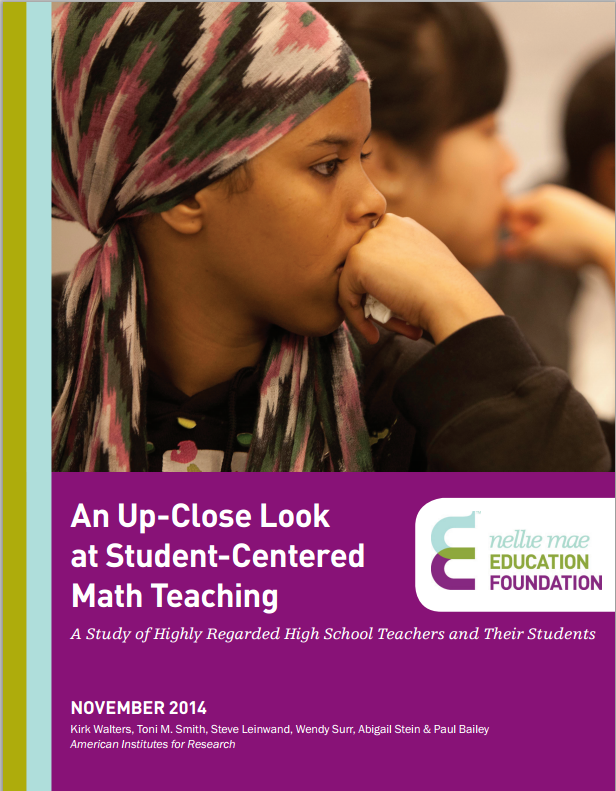How Should Teachers Teach?
This question is in fact difficult to address in a well designed experiment. The method of instruction is only one of many factors that may influence learning. Intimately related to how a teacher teaches is teacher quality. Another factor is the quality of learning materials. And I would guess that with the proper controlled conditions, the conclusions may be similar to what Slavin found when examining how the medium of instruction affects learning:
The two methods of teaching placed side by side in the above study are: Traditional versus Student-Centered. Not surprisingly, the first thing that the study finds out is that for highly regarded teachers in math, this is not really black and white. The teachers use both but one may still group the teachers into two sets: those who employ more traditional approaches and those who spend more time on student-centered instruction. The mode of instruction appears to be a spectrum and teachers pick whatever they think is most effective as dictated by the topic being taught. In fact, as the level of mathematics advances, teachers tend to choose the traditional approach more.
The study also provides specific examples of learning materials. The one shown below is an example of an activity that is student-centered:
What should be evident here is that student-centered instruction like the traditional way requires good materials. The above shows two works, both are wrong, but one got the correct answer fortuitously. In Lincoln's method, the substitution should have led to the following if done correctly:
The findings of the present study reinforce the frequently stated conclusion that what matters most in the education ... is the quality of instruction, not the language of instruction... Schools may choose to teach ... in either their native language or English for many reasons, including cultural, economic, or political rationales. Yet the data from this experiment do not support the claims that this choice is crucial for ultimate learning of English or Spanish reading.
-Reading and Language Outcomes of a Five-Year Randomized Evaluation of Transitional Bilingual Education, Slavin et al. 2010
I am afraid that it is a lot of work and in the end, the findings will be similar to what is found regarding the medium of instruction. With regard to teaching math, a group at the American Institutes of Research actually took the daunting task of examining how the method of teaching affect learning outcomes in mathematics. To remove the effect of teacher quality, the paper focuses on twenty two highly regarded teachers in New York and six New England states.
 |
| To read the entire report, please click here. |
 |
| Above copied from "An Up-Close Look at Student-Centered Math Teaching and Its Effects on Learning: A Study of Highly Regarded High School Teachers and Their Students" |
 |
| Above copied from "An Up-Close Look at Student-Centered Math Teaching and Its Effects on Learning: A Study of Highly Regarded High School Teachers and Their Students" |
5(-3-y) - y = -15
-15 - 5y - y = -15
-6y = 0
Luckily for Lincoln, having the right number of y's does not matter since it is equal to zero. Claire, on the other hand, is not that fortunate since x is not equal to zero so one really has to get its coefficient correctly:
5x - (-3-x) = -15
6x = -18
x = -3
Student-centered instruction requires good learning materials. And needless to say, it also demands quality instructors. One could just imagine the frustration of a pupil who is placed in a student-centered class without the scaffold he or she needs. It could be very frustrating especially if the instructor does not even understand what Lincoln or Claire did wrong....
Comments
Post a Comment